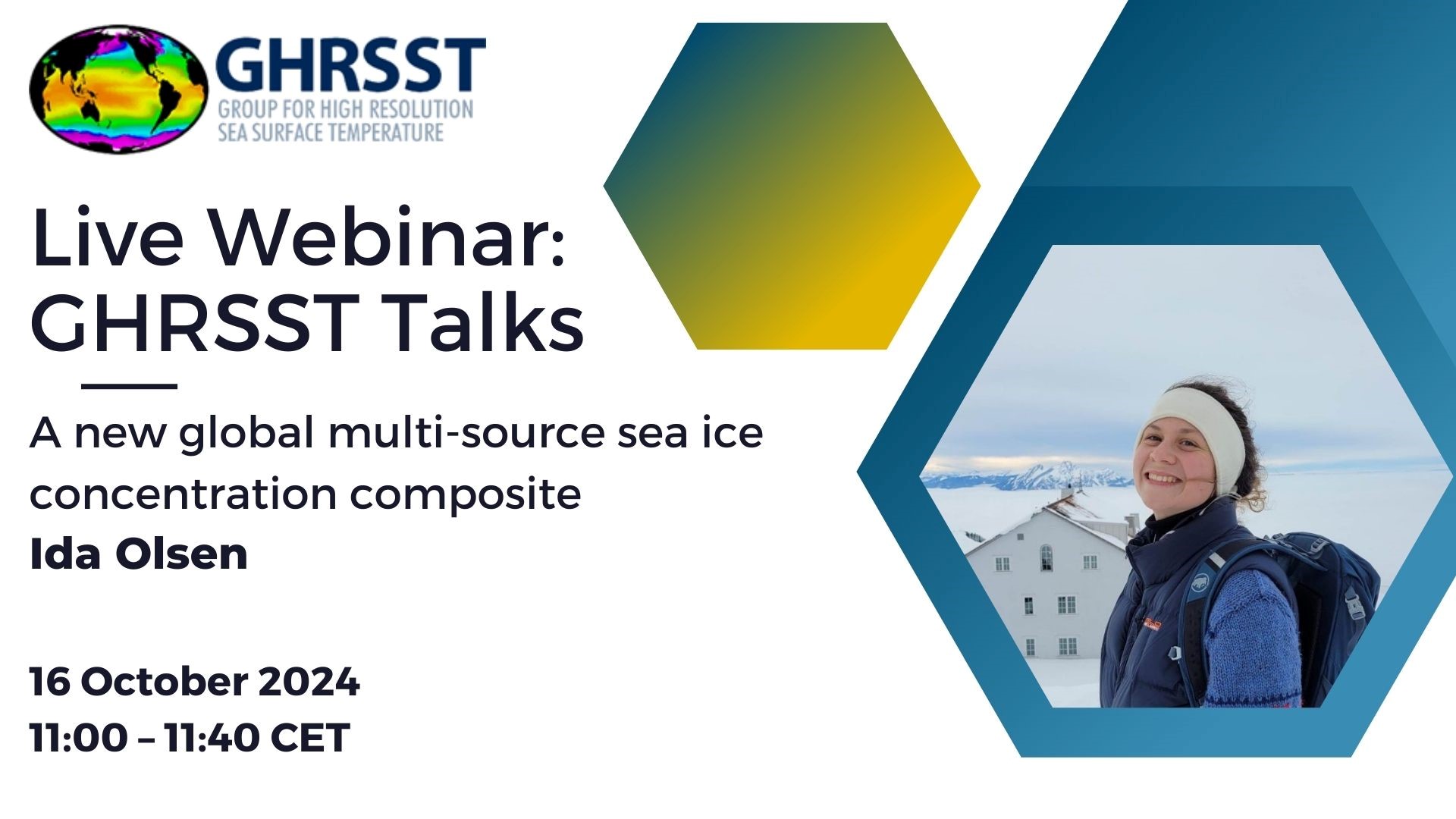Please join us for this GHRSST Talk with Ida Lundtorp Olsen on:
A new global multi-source sea ice concentration composite
Authors
- Ida Birgitte Lundtorp Olsen, Danish Meteorological Institute, Sankt Kjelds PL. 11 2100 København, ilo@dmi.dk
- Pia Nielsen-Englyst, Danish Meteorological Institute, Sankt Kjelds PL. 11 2100 København, pne@dmi.dk
- Jacob Lorentzen Høyer, Danish Meteorological Institute, Sankt Kjelds PL. 11 2100 København, jlh@dmi.dk
- Thomas Lavergne, Norwegian Meteorological Institute, Henrik Mohns plass 1 0313 Oslo, thomas.lavergne@met.no
- Anton Birkedal, Danish Meteorological Institute, Sankt Kjelds PL. 11 2100 København, ABI@dmi.dk
Abstract
Sea ice concentration is a headline climate indicator, serving as one of the most evident indicators of climate change. Various climate data records for sea ice concentration exist and they provide an essential tool for monitoring and evaluating long-term climate trends in sea ice coverage.
The accuracy and spatial resolution of existing sea ice concentration climate data records vary depending on the satellite sensors and frequency subsets used in retrieval algorithms. Typically, these records rely on data from a single sensor to maintain long-term consistency, although this approach fails to gain the full potential from improving satellite sensors.
At the Danish Meteorological Institute (DMI), we have developed a new global multi-source sea ice concentration composite by integrating existing climate data records and sea ice chart information. This composite aims to provide the most reliable sea ice information from 1982 to 2023, and various filtering methods have been applied to ensure long-term consistency. The sea ice concentration fields are currently being implemented for the second generation of the Copernicus Arctic Regional Reanalysis (CARRA) system as well as the new global, combined sea and sea-ice surface temperature climate data record for the Copernicus Climate Change Service (C3S).
This presentation offers an overview of the multi-source sea ice concentration composite, outlining key aspects of the methodology. Additionally, it will compare the results with other climate data records including the OSI SAF Global Sea Ice Concentration climate data record (SMMR/SSMI/SSMIS) release 3 and the NOAA/NSIDC Climate Data Record of Passive Microwave Sea Ice Concentration, Version 4.
About Ida
My name is Ida Olsen and I am a researcher at the Danish Meteorological Institute’s National Center for Climate Research, where I work in the Satellites and Arctic unit. I graduated last year from the Technical University of Denmark, with a specialization in Earth Observation. During my studies, I mainly worked with sea ice, including estimation of snow depth on sea ice, sea ice thickness and sea ice concentration, but after starting at the Danish Meteorological Institute, my research has shifted towards working with sea and ice surface temperatures.
Watch the Recording

